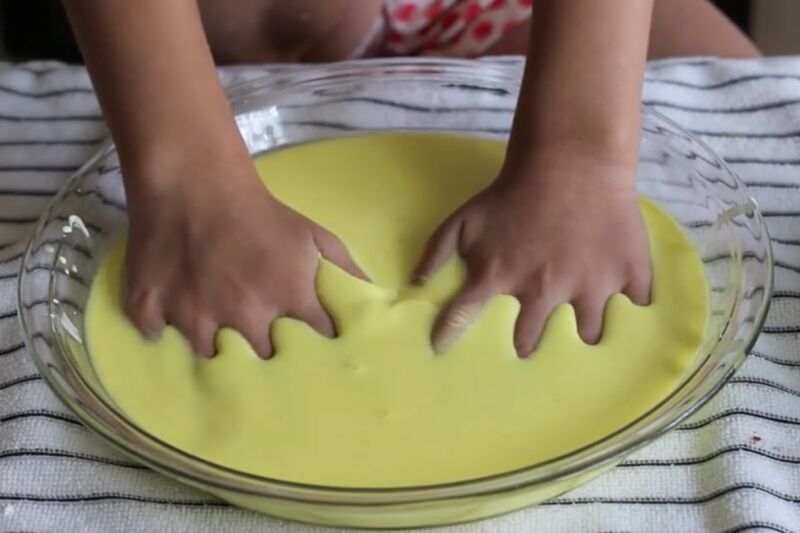Enlarge / “Oobleck” is a classic kitchen science example of a shear-thickening non-Newtonian fluid. (credit: Screenshot/PBS)
Oobleck has long been my favorite example of a non-Newtonian fluid, and I’m not alone. It’s a hugely popular “kitchen science” experiment because it’s simple and easy to make. Mix one part water to two parts corn starch, add a dash of food coloring for fun, and you’ve got oobleck, which behaves as either a liquid or a solid, depending on how much stress is applied. Stir it slowly and steadily, and it’s a liquid. Punch it hard, and it turns more solid under your fist. You can even fill small pools with the stuff and walk across it since the oobleck will harden every time you step down—a showy physics demo that naturally shows up a lot on YouTube.
The underlying physics principles of this simple substance are surprisingly nuanced and complex, and thus fascinating to scientists. Molecular engineers at the University of Chicago have used dense suspensions of piezoelectric nanoparticles to measure what is happening at the molecular level when oobleck transitions from liquid to solid behavior, according to a new paper published in the Proceedings of the National Academy of Sciences.
Toward the end of his life, Isaac Newton laid out the properties of an “ideal liquid.” One of those properties is viscosity, loosely defined as how much friction/resistance there is to flow in a given substance. The friction arises because a flowing liquid is essentially a series of layers sliding past one another. The faster one layer slides over another, the more resistance there is; the slower one layer slides over another, the less resistance there is. But the world is not an ideal place.
Read 11 remaining paragraphs | Comments

